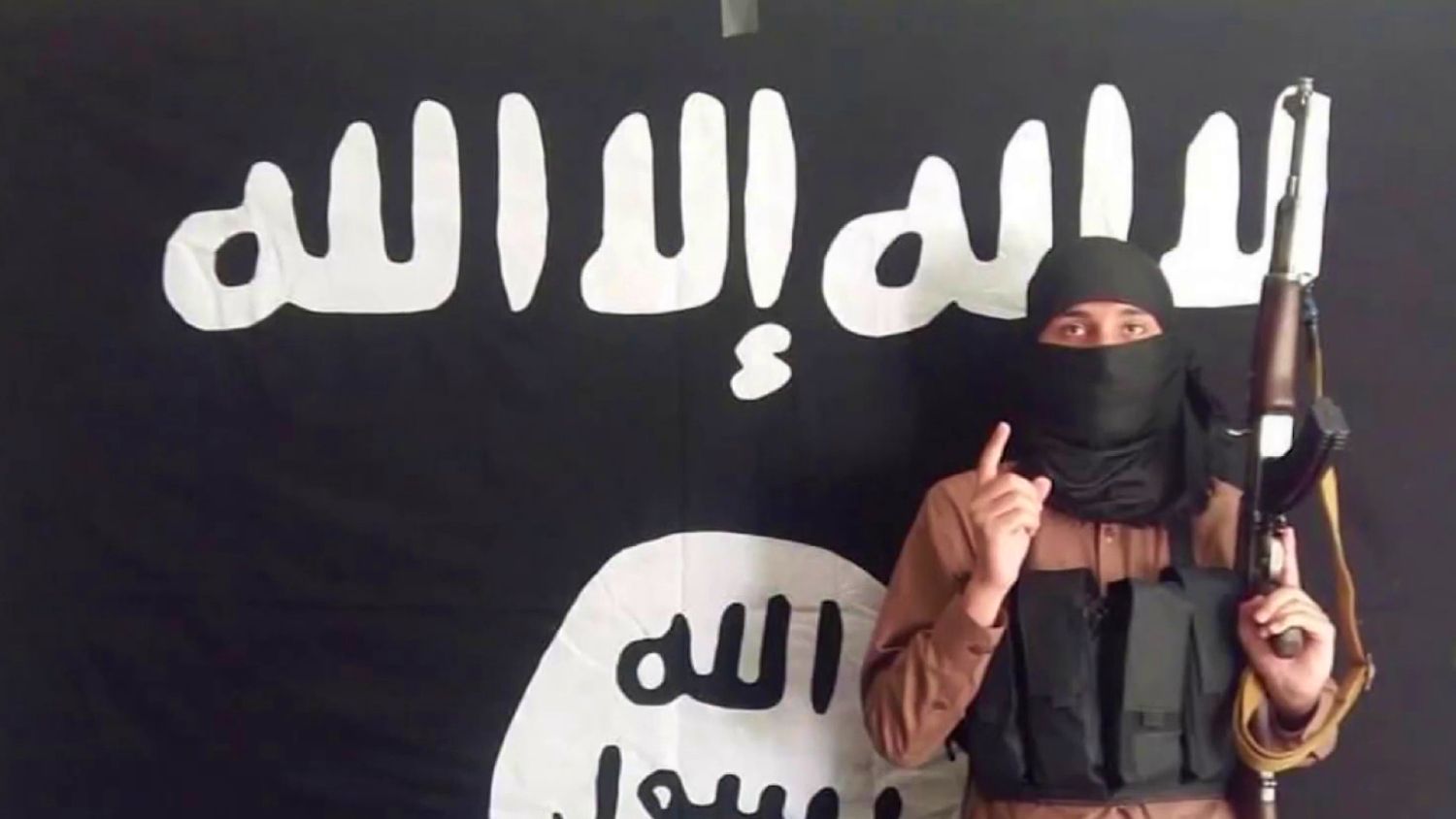OPED By Salah Uddin Shoaib Choudhury
Ever since assuming office, US President Joe Biden has been consistently misleading the world with lies and fabricated stories, thus further deepening the risks posed by Islamist militancy outfits, including Islamic State (ISIS), Al Qaeda, Hezbollah, Hamas, Houthis, and others. Abruptly ending the ‘War on Terror’ and withdrawing US troops from Afghanistan was a disastrous blunder.
Meanwhile, the Palestinian terrorist outfit Hamas has succeeded in expanding its network within Western countries, where the number of its fighters is already much more significant than that of Islamic State (ISIS) and Al Qaeda.
This was proved when seven terrorists, including four Hamas members, were arrested in Denmark, Germany, and the Netherlands on suspicion of planning attacks on Jewish institutions in Europe. The arrests were made as Israel pressed on with its operation to destroy Hamas in the Gaza Strip following the October 7 Hamas pogrom in Israel.
According to German prosecutors, all of these detained terrorists are longstanding members of Hamas with close links to the leadership of the terrorist organization’s military branch.
With the October 7 Hamas pogrom, counterterrorism experts are opining that the world has failed so far to predict and prevent notable attacks from terrorist organizations. During the past two decades, there have been major terrorist attacks, including the September 11, 2001 attacks in the United States (US), the March 2004 Madrid bombings, the July 2005 London bombings, the November 2008 Mumbai attacks, the November 2015 Paris attacks, and October 7 Hamas pogrom.
These cases of capture of Hamas members in the Western nations are a matter of grave security concern as we are unaware of the exact size of such elements, which might already have infiltrated those societies by successfully melting in the crowds of illegal migrants.
Though it may be almost impossible to track or identify these hidden Hamas terrorists within a massive crowd of Palestinian immigrants or pro-Palestine and pro-Hamas activists within those societies, witnessing the extreme cruelty of this terrorist organization, it would be essential now for every conscious and peace-loving member of the Western nations to maintain substantial surveillance on these elements.
It may be mentioned here that each of the notable terrorist attacks by jihadist outfits such as Al Qaeda, Islamic State (ISIS), and Hamas has recorded databases and comments on intelligence weakness, and the governments were accused of failing to prevent these attacks.

Following the October 7 Hamas pogrom, Israel’s intelligence establishments also faced similar criticism. Although it is noteworthy that the debates centering on intelligence failure have faded over the years, and the low-profile attacks of jihadist organizations have sent a message to the Western governments that these groups are no more threats to global security.
Today, the narrative in the Western world is that these groups, including the Islamic State (ISIS), have been nailed down and are local threats. The US administration and intelligence organizations also indulged in similar thoughts or perceptions.
But the reality is just the opposite. Neither Islamic State has been defeated nor growing monsters such as Hamas. According to the Global Terrorism and Trends Analysis Center (GTTAC) Records of Incidents Database (GRID), ISIS is unique in the history of terrorism from various perspectives: First, it was Al-Qaeda’s regional branch in Iraq in the early 2000s, but it evolved into today’s ISIS in the Middle East. The terrorist group-controlled territory in Iraq and Syria acted like a de facto state and ruled more than six million people.
At its peak in 2014 and 2015, the organization recruited more than 30,000 militants from more than 90 countries. Second, it is considered a role-model organization in which other groups emulate its violent tactics, such as beheadings, burning people alive, and suicide bombings. Third, the group actively uses social media to recruit jihadists.
Fourth, its ideology is more inspirational to European- or US-born individuals. Today, lone actors who are inspired by ISIS ideology are more than any other Salafi-jihadist terrorist group. Fifth, ISIS was able to generate two billion dollars yearly in revenue from charities and donations, as well as its involvement in illicit trade such as oil smuggling and antiquities trafficking.
Sixth, ISIS has a regional-level representation
ISIS’s growing popularity has led other jihadist groups to convene under its flag to benefit from its fame and become a well-known terrorist organization, given the fact that they are aware of how this strategy brings them more recruits and funds.
For example, the Ansar al-Sunna group, which operated in northern Cabo Delgado, pledged allegiance to ISIS in 2017 and changed its name to ISIS-Mozambique (ISIS-M). Later years recorded brutality of ISIS-M and involvement in beheading attacks and ending up in the Department of State’s Foreign Terrorist Organization (FTO) list.
The narrative of ISIS’s defeat is based on several arguments. The Western world believes that ISIS and its affiliated organizations are confined to the regions and are primarily regional threats. Moreover, these groups have recently failed to make notable attacks and are the perpetrators of low-profile attacks, mainly targeting local military forces and state institutions.
Additionally, the Western world is overconfident in the results of decapitation strategies that target the leader of a Salafi-jihadist terrorist organization. For example, two of ISIS’s successive leaders were killed in US military operations in 2019 and 2021. However, these strategies have little impact on jihadist groups as it takes only several hours to replace the decapitated leader.

Contrary to the common belief about ISIS’s defeat, the GRID recorded a rising number of attacks by ISIS and its affiliated organizations from 2018 to 2022, as seen in Figure 1 below. Its attacks steadily grew in this period, with 1,313 attacks in 2022.
The ISIS-Core is still based in Syria and Iraq, and it is the leading group with the most incidents. The group was the perpetrator of 2,885 attacks from 2018 to 2022. International reports underline that ISIS militants left Iraq and Syria and moved to other conflict zones, including the countries in the Sahel.
ISIS is far from its former prominence and operational capacity of 2014 and 2015; however, the group maintains its presence in the region, mainly the Deir ez-Zur province of Syria. Whereas most of its attacks are low-profile and recorded several people killed or wounded in Iraq and Syria, the steadily increasing attacks over the years seem to be alarming and require a close approach to ISIS-Core in the Middle East.
ISIS-DRC, also known as the Allied Democratic Forces (ADF), is responsible for many attacks across North Kivu and Ituri provinces. The group was designated as a terrorist organization by the Department of State in 2021. The group is notorious for its deadly violence against Congolese citizens and regional military forces.
ISIS-DRC conducted 1,050 attacks from 2018 to 2022. ISIS-West Africa is based in Nigeria and has competed with the Boko Haram terrorist organization to be the regional hegemon in Western Africa. In 2023, ISIS-West Africa continued its attacks in the region and used Katyusha rockets in several of its attacks, targeting the military in Niger in November 2023.
Terror patron Iran has supplied these rockets to organizations in Yemen, Lebanon, Iraq, and Syria. It was the first use of these rockets by ISIS-West Africa. It is a question of how ISIS-West Africa procures these rockets, but the records of Katyusha rockets in the Middle East make Iran the biggest suspect as a supplier. ISIS-Mozambique (ISIS-M) is another organization that committed 281 attacks from 2018 to 2022.
Designated as a terrorist organization in 2021, ISIS-M is one of the deadliest ISIS regional affiliates due to its use of beheadings as a terrorist tactic. Another ISIS group on the list is its affiliate in Afghanistan. ISIS-K has become a regional threat and expanded its operational capacity in Pakistan, Uzbekistan, and Tajikistan.
In 2023, ISIS and its affiliated organizations continued their attacks. In the first nine months of 2023, GRID recorded 813 attacks. ISIS-Core was the leading organization with 392 attacks in Syria and Iraq, followed by ISIS-DRC with 204 attacks, ISIS-West Africa with 57, ISIS-M with 49, and ISIS-K with 39 attacks. Also, ISIS affiliates in the Philippines garner special attention due to their increasing attacks in the region.
Hamas is becoming a much bigger terrorist organization with its growing fund generation through numerous business ventures throughout the world, including its involvement with Afghan narco-rackets and South America-based drug cartels, which ultimately would generate billions of dollars each year for this mega-terror outfit.
Although until recently, Hamas was considered a terrorist group based in Gaza, with the latest media exposures proving its footprint in Qatar, Turkey, Iran, Afghanistan, and the Western nations, it won’t be unwise to tag Hamas growing as an international terrorist organization posing severe security threats to the entire Western world – including the United States.
- Salah Uddin Shoaib Choudhury is an internationally acclaimed multi-award-winning anti-militancy journalist, writer, research scholar, and editor of Blitz, a newspaper published in Bangladesh since 2003. He regularly writes for local and international newspapers. VIEWS PERSONAL
- Follow him on X @Salah_Shoaib




